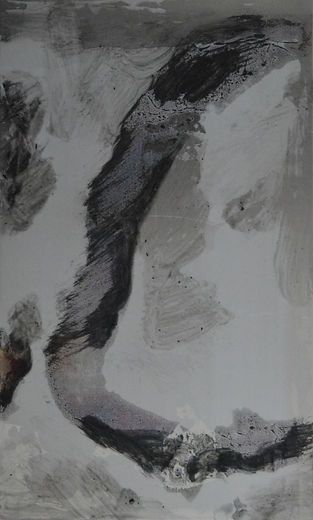a body that burns
2022-2023
independent research project
digital photographs, collections, oil and ink paintings, ceramic fragments, print transfers, charcoal and ashes on metal offcuts.
In Summer 2022, a terrible forest fire spread in North-East Italy, near the Italian-Slovenian border. This area, referred to as the Carso Forest, was greatly devastated. In this traumatic summer nearly 200,000 square metres of the forest were burnt down.
Having visited these areas multiple times while growing up in Friuli Venezia-Giulia, and knowing many people who were affected personally by these events, I felt the need to re-elaborate and process the trauma lived by the forest. In November 2022, I visited this area - specifically between Jamiano in Italy, and Brestovica Pri Komnu in Slovenia. This area was one of the areas which was affected the most.
I mapped the site via a photographic documentation - a testimony of what I found in the site in November 2022, about 3-months after the traumatic event. This was the start of a 12-month research project, analysing the devastation and rebirth of the forest through different artistic media in connection to the idea of trauma in Psychology, Chemical reactions, and practices of Memorial Art.
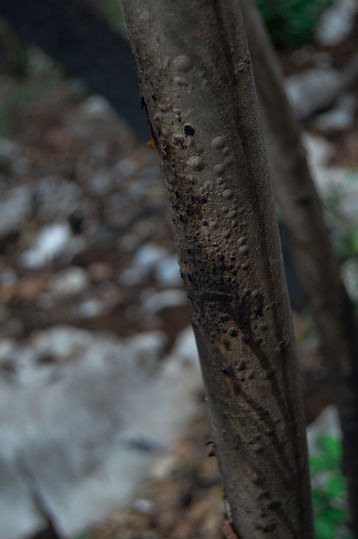



site of trauma
3-months after the fire - Jamiano, Italian-Slovenian border
digital photographs, 6016x4000 px
November 2022


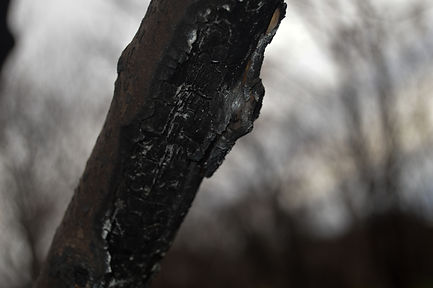

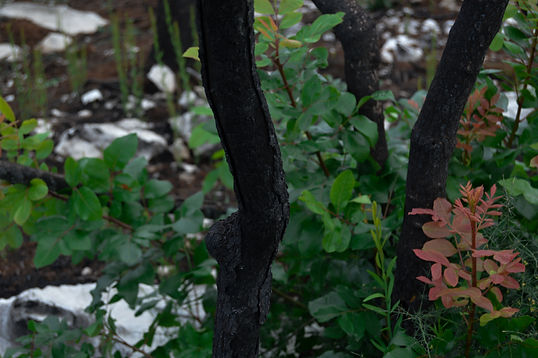
remains
2023
clay, soil, charcoal, ashes & glaze
Upon my visit to the area of the Carso, I collected small fragments: bark, branches, ashes, charcoal and soil.
After analysing them, I created a series of ceramic remains to immortalise the fragility of the burnt, scorched objects. Taking from the idea of memorial art, where ashes are used to create a work and cherish a loved one, I wanted to incorporate a part of these organic pieces in the work.
For this collection, I used the soil, charcoal and ashes, mixed with underglaze to coat the pieces, before a second firing in the kiln. While carbon based materials burn in the high temperatures of the kiln, the glaze encapsulates them, as if it were a resin, keeping a minimal residue protected.



remains
clay, soil, charcoal, ashes & glaze
12x12 cm ca (each)
2023
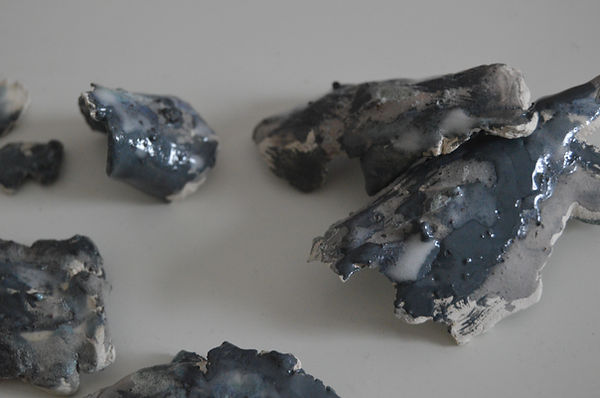
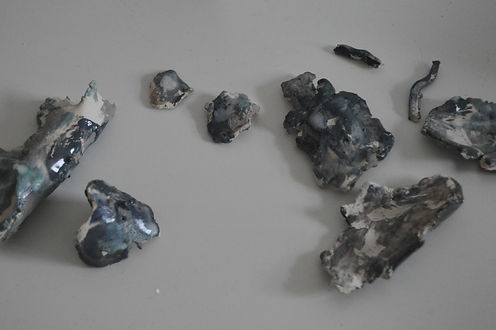



a body that burns I & II
2022
oil paint and ink on board, 30x30 cm (each)
forest diptych
2023
oil paint on canvas, 100x70 cm (each)
I based two groups of paintings on the photographs taken in November 2022 and February 2023, respectively 3 and 6-months after the fifire in the area of the Carso.
‘A body that burns I & II’ focused on the details, the idea of fragments and the transformations which the ground and roots of the trees were experiencing. Two oil paintings, on 30x30 cm boards, highlight the contrasting colour and
textures which were alien-like and unsettling.
The ‘Forest diptych’ looked at the landscape of the forest, with the charcoal/ dry quality of the wood and signs of new life. By putting the idea of death and rebirth at the centre, the two paintings, each on a 100x70 cm canvas, mirror each other. They each show life and death in different areas, as negative compositions - the idea of what was, what is and what there will be in this landscape.

a body that burns I & II
oil paint and ink on board
30x30 cm (each)
2022




fragments of a piece of autobiography
2023
transfer print, charcoal, ashes and slow oxidation on aluminium and copper panels, 80x80 cm (composition)
In this work, each panel represents a fragmented memory of the forest fire, which I attempt to reassemble in a composition.
These print transfers, on aluminium and copper offcuts, look at the fragments and the material but from a distance - adopting a more visual perspective than the ceramic ‘remains’ (2023). I chose to use a reflective material to give a certain luminosity, a spiritual dimension to the visual image. However, with the use of charcoal and ashes, they still cling to the forest.
The images were taken from photos of the burnt forest and the objects collected. Firstly, they were isolated with digital tools and then they were transferred onto primed metal offcuts.
After transferring the images, I mixed the charcoal and ashes with an acrylic and water medium applying it on the surfaces to highlight some aspects of the images.
While on the aluminium panels the charcoal and ashes mix stays stable, on the copper plates a slow oxidation occurs. Unlike the fast oxidation of a fire, the slow oxidation allowed to observe the material changing, giving time to reflect on the process as it came to an end.

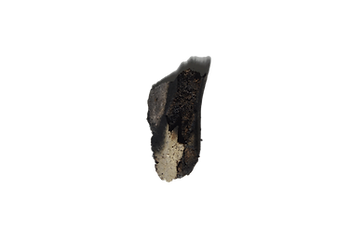
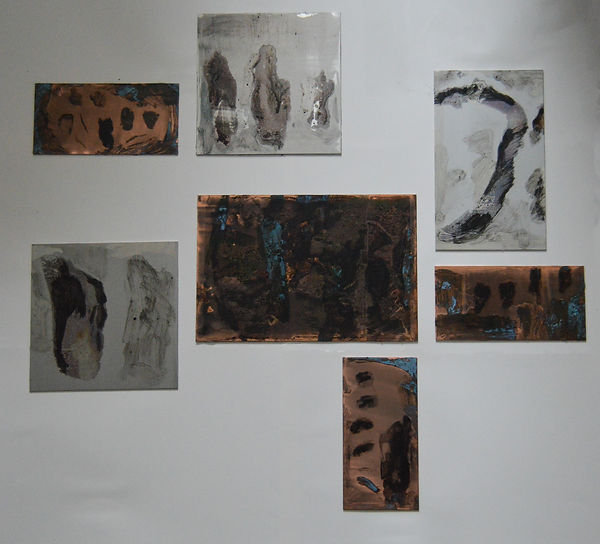


fragments of a piece of autobiography
transfer print, charcoal, ashes and slow oxidation on aluminium and copper panels
80x80 cm (composition)
2023
